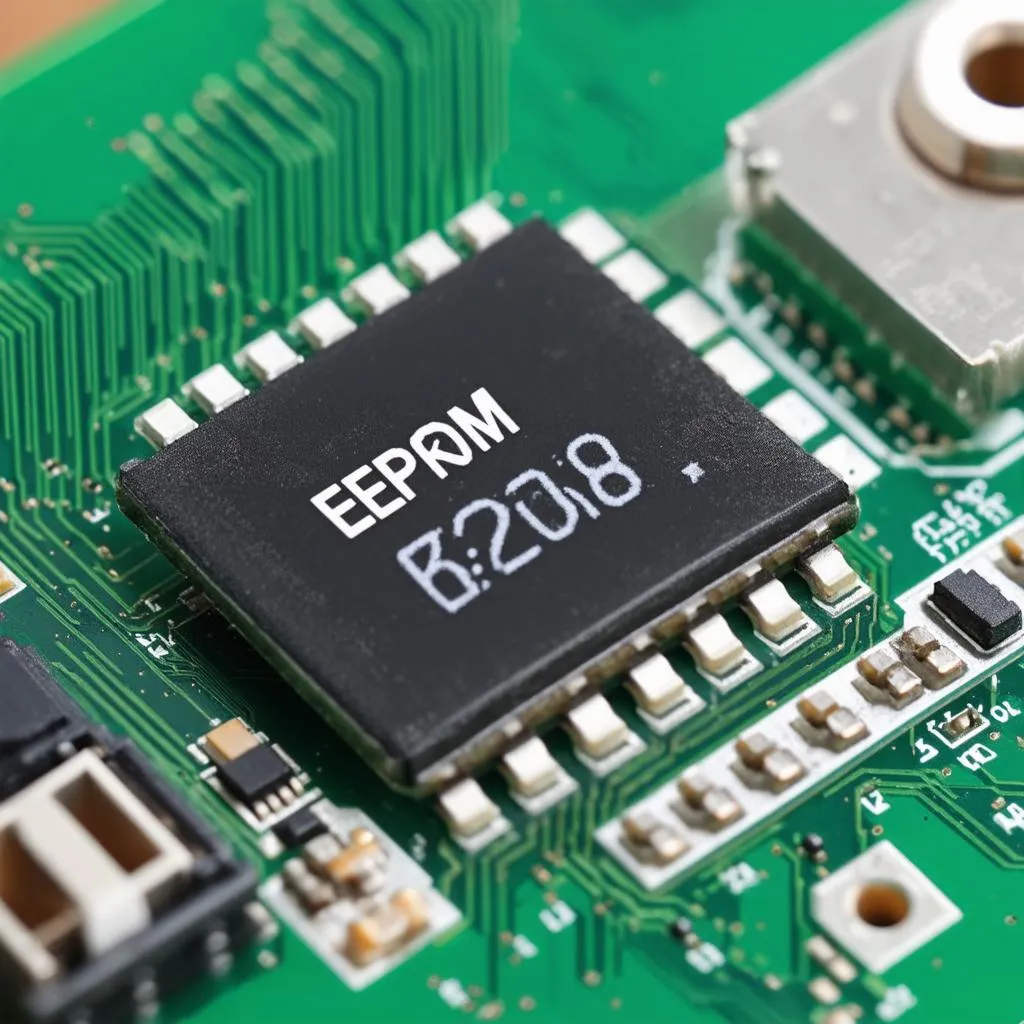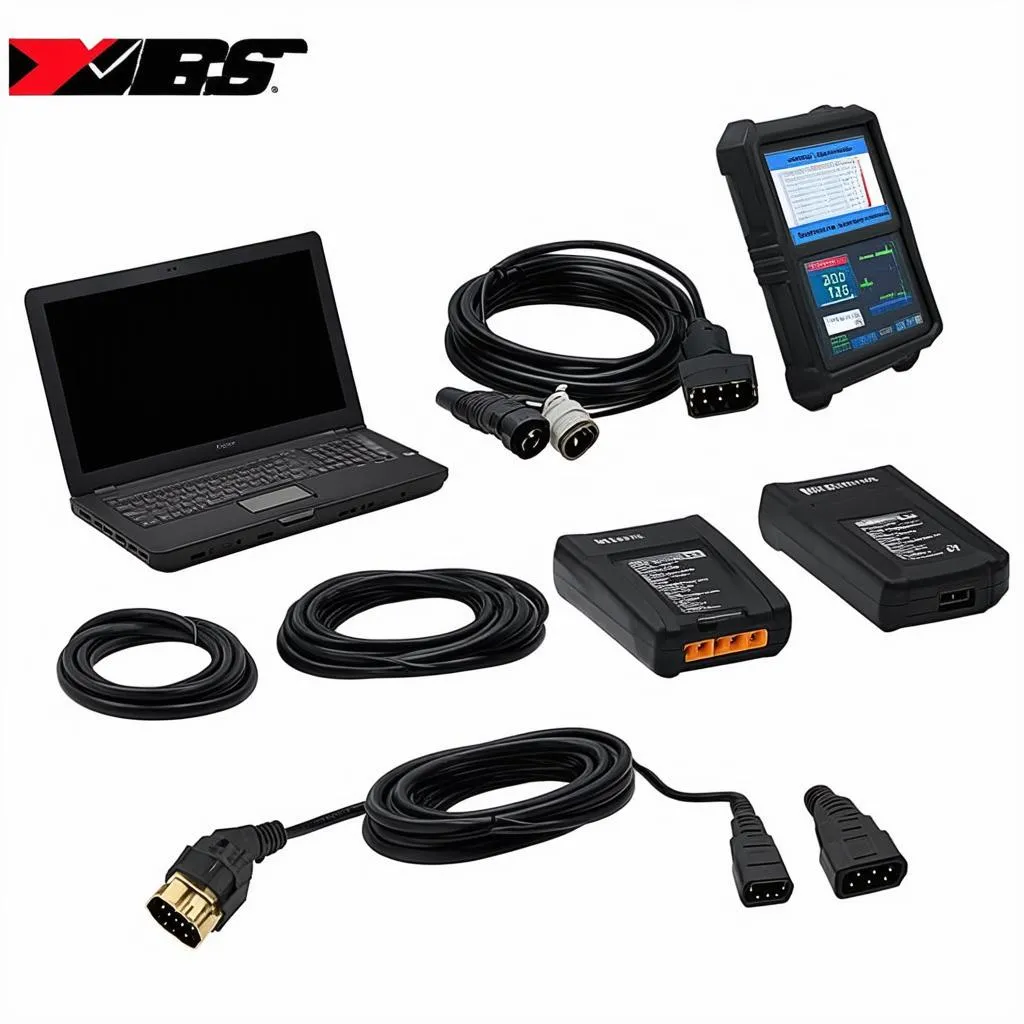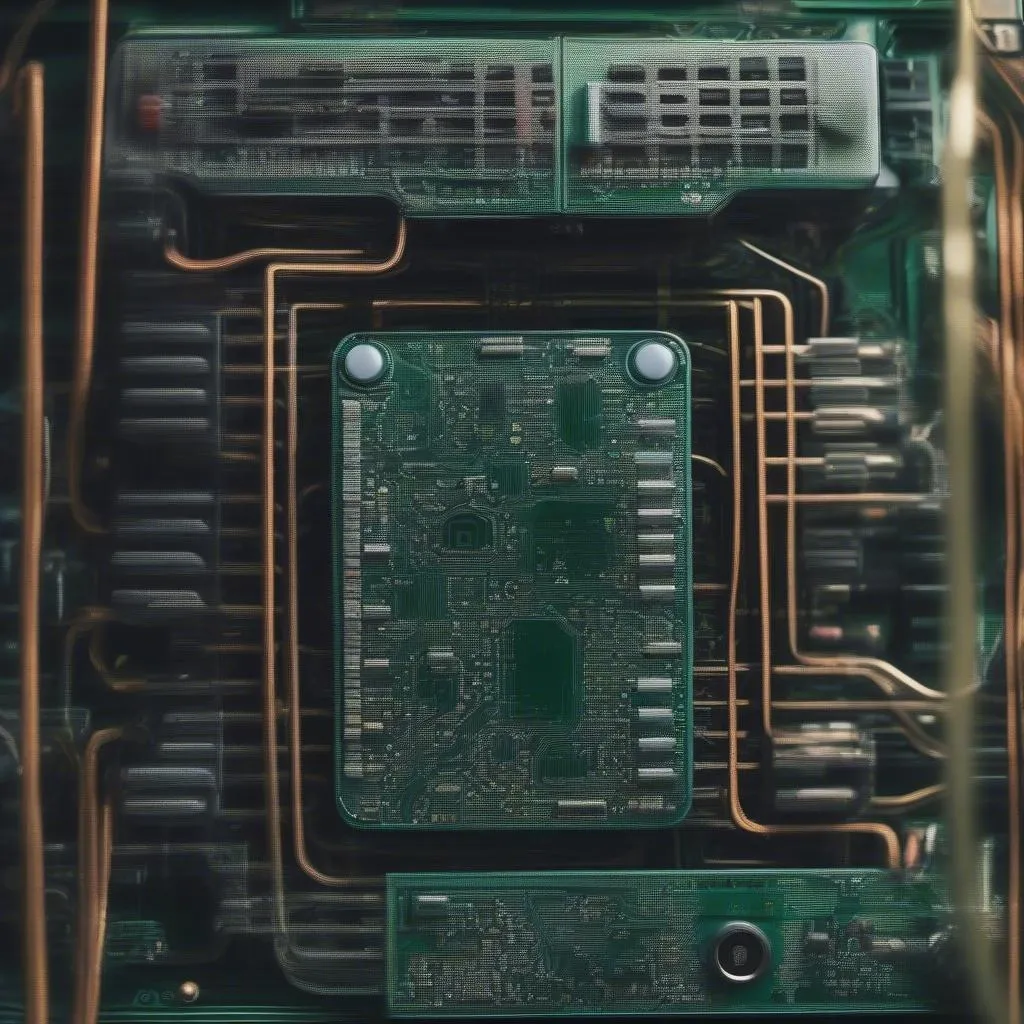The world of automotive diagnostics is constantly evolving, with new technologies emerging to diagnose and rectify vehicle faults. One such advancement involves the use of EEPROM (Electrically Erasable Programmable Read-Only Memory) in conjunction with VCDS (Vag-Com Diagnostic System) software. This powerful combination allows for complex modifications and coding changes within a vehicle’s control modules.
Understanding EEPROM and Its Role in Automotive
EEPROM is a type of non-volatile memory that retains data even when the power is turned off. In automotive applications, EEPROM is found within various electronic control units (ECUs), storing vital information such as:
- Vehicle Configuration Data: This includes details like the engine code, transmission type, and installed options, which are essential for the ECU to function correctly.
- Immobilizer Data: Critical information related to the vehicle’s immobilizer system is stored in EEPROM. This data is crucial for anti-theft functionality.
- Mileage Readings: In some vehicles, EEPROM stores the odometer reading, making it important to address any manipulation attempts.
VCDS: The Key to Accessing and Modifying EEPROM
VCDS, developed by Ross-Tech, is a powerful diagnostic and coding software suite designed for vehicles from the Volkswagen Audi Group (VAG). Beyond standard diagnostic capabilities, VCDS offers advanced functions, including the ability to read, write, and modify data within a vehicle’s EEPROM.
Accessing and Modifying EEPROM Data with VCDS
Accessing EEPROM data with VCDS typically involves the following steps:
- Establish Communication: Connect the VCDS interface to the vehicle’s OBD-II port and launch the VCDS software.
- Select Control Module: Navigate to the specific control module that houses the EEPROM data you need to access.
- Enter Advanced Functions: Depending on the module and VCDS version, you may need to enter a security access code to access advanced functions.
- Read EEPROM Data: Once in the advanced functions menu, locate the option to read EEPROM data. This will display the raw data stored within the module’s EEPROM.
- Modify Data (With Caution): Editing EEPROM data should only be performed by experienced professionals. Improper modifications can lead to unexpected vehicle behavior and potential damage to the ECU.
 EEPROM Chip
EEPROM Chip
Common Uses of EEPROM and VCDS in Automotive Diagnostics and Repair
EEPROM and VCDS, when used together, become powerful tools for various tasks:
- Module Coding and Adaptation: Technicians can make changes to how a vehicle’s systems operate, such as adjusting throttle response, enabling/disabling features, or fine-tuning transmission shift points.
- Key and Immobilizer Programming: When replacing a faulty ECU or adding a new key, EEPROM access allows for programming new keys and matching them to the vehicle’s immobilizer system.
- Mileage Correction: In specific situations, like instrument cluster replacement or EEPROM corruption, mileage correction may be necessary to reflect the vehicle’s actual mileage accurately.
Importance of Expertise
“Working with EEPROM and vehicle electronics demands a deep understanding of automotive systems,” cautions automotive electronics specialist Dr. Markus Kohler. “A minor error in coding or data modification can have significant, unintended consequences.”
Advantages of Using EEPROM and VCDS
- Flexibility and Customization: Allows for fine-tuning vehicle settings to meet specific needs or preferences.
- Cost-Effective Repairs: Can potentially avoid costly module replacements by reprogramming existing modules.
- Advanced Diagnostics: Access to EEPROM data provides valuable insights for troubleshooting complex issues.
Disadvantages of Using EEPROM and VCDS
- Risk of Damage: Improper use can potentially damage ECUs, resulting in costly repairs.
- Legal Implications: In many regions, altering mileage data is illegal.
- Technical Expertise Required: Navigating VCDS and understanding EEPROM structure requires specialized knowledge.
 Car Diagnostic Tools
Car Diagnostic Tools
Frequently Asked Questions
Can I Use Any VCDS Cable to Access EEPROM Data?
Not all VCDS cables are created equal. Some cheaper, counterfeit cables may not support all functions, including EEPROM access. Always use a genuine Ross-Tech VCDS cable to ensure full functionality and avoid potential problems.
Is It Legal to Modify EEPROM Data?
The legality of EEPROM modification varies depending on your location and the purpose of the modification. Always check local regulations, especially concerning mileage correction.
Where Can I Learn More About Using VCDS and Accessing EEPROM?
Ross-Tech, the developer of VCDS, provides extensive documentation and resources on their website. Additionally, online forums and communities dedicated to automotive diagnostics can be valuable sources of information.
Conclusion
The combination of EEPROM technology and powerful diagnostic tools like VCDS has revolutionized automotive repair and customization. While these advancements offer incredible flexibility and potential cost savings, it’s crucial to remember that working with EEPROM data requires specialized knowledge and caution. If you are not comfortable with the technical aspects, consult a qualified automotive electrician or diagnostic specialist to avoid potential issues.
If you need reliable automotive diagnostic tools, be sure to explore the range of products offered by CARDIAGTECH. They provide high-quality equipment to help you diagnose and resolve vehicle issues effectively.

